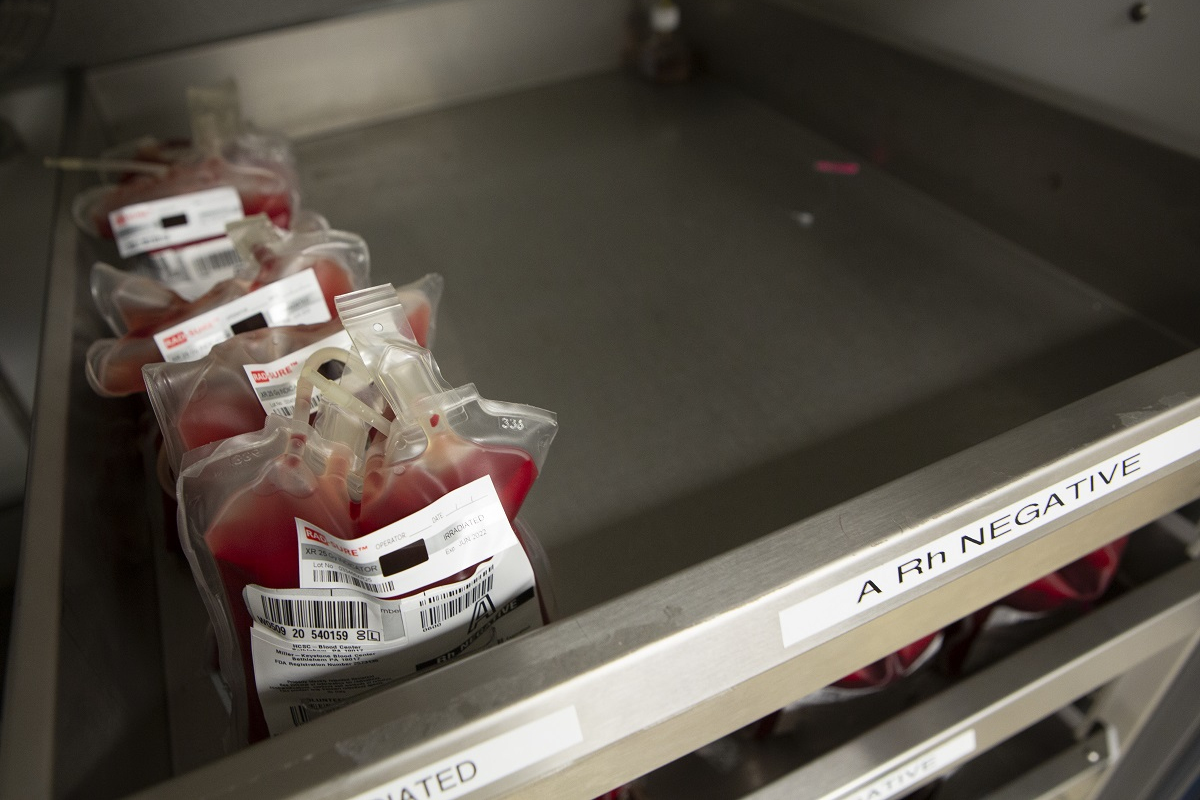When the COVID-19 pandemic hit, many of the region’s blood drives disappeared. According to the American Red Cross, blood drive cancellations tripled in 2020 due to the pandemic, and collections at high schools and colleges dropped by more than 50% compared with the prior year.
Yet the need for blood, plasma and platelet donations remains strong locally and nationally. “We’ve seen a 16% increase in the number of transfusions overall compared to pre-COVID-19,” said Sean Erony, section chief for the blood bank in the Department of Pathology and Laboratory at Penn State Health Milton S. Hershey Medical Center.
January is National Blood Donor Month, a nearly 50-year-old tradition that helps spread the word about the importance of donating blood, plasma or platelets. Tertiary care centers such as the Milton S. Hershey Medical Center rely on donations to help save lives. The American Red Cross estimates a daily need for 36,000 units of red blood cells, 7,000 units of platelets and 10,000 units of plasma nationwide.
“Treating patients is a 24/7/365 mission, and you never know when a desperately ill patient—a tiny newborn, an adult needing a bone marrow transplant, or a trauma patient—will need blood,” said Dr. Melissa George, medical director of the blood bank at Hershey Medical Center. George estimates trauma patients may need as many as 100 units of red blood cells because of critical bleeding during and after an accident.
In Pennsylvania, anyone older than 16 may donate blood. Donors must be in relatively good health and weigh 110 pounds or more. People experiencing an illness, people with low iron or those who have traveled outside the U.S. to countries with high rates of malaria may not be eligible. However, “People who had COVID-19 can give blood so long as they are 14 days out from the resolution of symptoms,” George said. The American Red Cross offers this list of blood donor eligibility facts.
The American Red Cross, Central Pennsylvania Blood Bank and Miller Keystone Blood Center all accept blood donations that help benefit patients in our region. During blood drives at Hershey Medical Center throughout the pandemic, the American Red Cross added more safety precautions, requiring mask-wearing for donors and blood-drive employees, taking donors’ temperatures at the door and ensuring proper social distancing.
While a persistent need exists for the donation of all blood products, donations for convalescent plasma for patients fully recovered from COVID-19 are in particularly high demand. This plasma may be a COVID-19 treatment. “Our blood bank members have transfused almost 200 units of COVID-19 patients with convalescent plasma at Hershey Medical Center and Penn State Health St. Joseph Medical Center,” Erony said.
Just one blood donation potentially can save as many as three lives. Donation also brings a personal satisfaction from helping others. “It’s always a rewarding feeling when you’re able to give something to a patient in need,” George said.
The Medical Minute is a weekly health news feature produced by Penn State Health. Articles feature the expertise of faculty, physicians and staff, and are designed to offer timely, relevant health information of interest to a broad audience.
